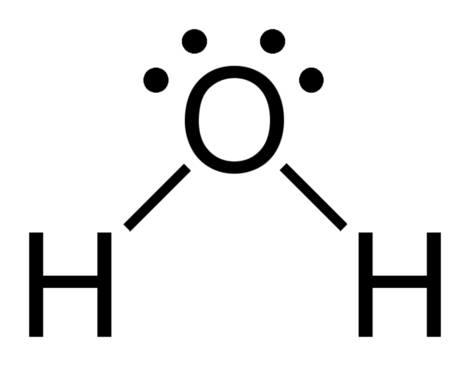Objective
The first objective of the experiment was to demonstrate how pinacol (alcohol) undergoes rearrangement to form pinacolone (ketone) under the catalysis of heat, acid, and boiling chips. The second objective of the experiment was to confirm the occurrence of pinacol rearrangement using the qualitative tests of IR, NMR, and 2,4-DNP.
Synthesis equation for the reaction

Physical properties
Pinacol

Molar mass: 118.17 g/mol
Melting point: 40-43 °C
Boiling point: 171-172 °C
Density: 0.967 g/mL
Hazards: Irritant, flammable.
Water

Molar mass: 18.01 g/mol
Melting point: 0°C
Boiling point: 100 °C
Density: 0.997 g/mL
Sulfuric acid

Molar mass: 98.08g/mol
Melting point: 10°C
Boiling point: 290 °C
Density: 1.840g/mL
Hazards: Toxic, flammable, corrosive, and irritant.
Sodium chloride
Molar mass: 58.44g/mol
Melting point: 801°C
Boiling point: 1413 °C
Density: 2.17g/mL
Hazards: Irritant.
Sodium sulfate

Molar mass: 142.04g/mol
Melting point: 884°C
Boiling point: 1700 °C
Density: 2.68g/mL
Hazards: Irritant.
Pinacolone
Molar mass: 100.16g/mol
Melting point: -52.5 °C
Boiling point: 106°C
Density: 0.801g/mL
Hazards: Harmful, flammable, and irritant
For the 2,4-DNP test:
2,4-dinitrophenylhydrazine

(2,4-DNP):
Molar mass: 198.14g/mol
Melting point: 197-200°C
Density: 0.843g/ml
Hazards: Flammable, harmful
Procedure
The procedure of pinacol rearrangement commenced with the weighing of 3 g of pinacol as the solute and measurement of 30 ml of deionized water as the solvent. The pinacol was dissolved in deionized water placed in a 50 ml round-bottom flask then heated gradually to allow the solute to dissolve. The heated solution was cooled using tap water to room temperature, and two boiling chips were put in the solution. Subsequently, 0.5 ml of concentrated sulfuric acid was measured cautiously and gradually added to the contents of the flask. The reacting contents of the flask were swirled for 10 minutes while cooling in the tap water bath because the reaction generates immense heat.
A simple distillation apparatus was set up and used in distilling the contents in the flask. The distillate was collected in a 25 ml round-bottom flask and the distillation process was halted when the temperature of the vapor attained 100°C. To absorb water from the distillate, 5 ml of saturated sodium chloride was put in the flask containing distillate, and the transfer pipette was used to take out the aqueous layer. Anhydrous sodium sulfate was used to dry the remaining organic phase, which was then transferred into a pre-weighed sample vial and capped for further analysis. The capped liquid was weighed and the percent yield computed. Furthermore, qualitative analysis to confirm the formation of pinacolone was done using the tests of IR, NMR, and 2,4-DNP.
Calculation of theoretical and percent yield
Theoretical yield
- Mass of Pinacol= 3.0 g
- Moles of Pinacol= 3.0g /118.17 g/mol= 0.02538 mol
- Theoretical yield=(0.02538mol*100.16g/mol)/ 1 mol of pinacolone= 2.542g
Percent yield
- Empty sample vial= 36.35g
- Sample vial + content= 37.98g
- mass of the product= 1.63g
- Percent yield= (Actual/theoretical) *100= (1.63g/2.542g) *100= 64.1%
Synopsis of results
The analysis of the outcomes of the experiment revealed that the reactant (pinacol) underwent rearrangement. The product weighed was 1.63 g while the theoretical product was 2.542 g. Computation of the percent yield indicated that the product comprised 64.1% of the theoretical yield. The percent yield shows that there is a moderate yield of pinacolone due to the inefficiencies in the experiment. One potential explanation of the inefficient formation of the product is that all pinacol did not undergo rearrangement to form pinacolone. However, the IR spectrum does indicate the absence of O-H stretch at 3500-3600cm-1 wavenumbers. The absence of the O-H stretch implies that all pinacol underwent rearrangement to form pinacolone. Another explanation of the inefficient yield of pinacolone is the evaporation of pinacol resulting in the reduction of the number of molecules present for rearrangement. Other factors related to the experimental process might have also contributed to the reduced yield of pinacolone.
Discussion
Pinacol rearrangement is an organic reaction characterized by dehydration of an alcohol to form a ketone. This reaction occurs when concentrated sulfuric acid, heat, and boiling chips catalyze pinacol rearrangement among diverse 1,2-diols such as glycols. The reaction derives its name from reactant, pinacol, which is an alcohol that undergoes rearrangement into ketone (pinacolone). The reaction follows the reaction mechanism of SN1 for it entails the formation of a carbonyl group from a diol.
Given that alcohols are bad leaving groups, they require concentrated sulfuric acid to catalyze them and enhance their leaving ability in organic reactions. Concentrated sulfuric acid catalyzes the rearrangement reaction by protonating an alcohol group in pinacol making it a good leaving group. As the reaction of pinacol rearrangement is exothermic, a tap water bath was used to cool the reacting contents to room temperature instead of the ice bath, which could crystallize them. The mechanism of catalysis is that hydrogen ion protonates oxygen molecules in the hydroxyl group and allows its lone pair of electrons to attract hydrogen ion leading to the formation of a good leaving group, the oxonium ion (-OH2+), from the alcohol group.
The SN1mechanism of pinacol rearrangement results in the formation of a tertiary carbocation, which is relatively stable. Further rearrangement of the carbocation results in the methyl shift, which is the migration of a methyl group with tertiary carbocation. The methyl shift increases the stability of the tertiary carbocation because it places the carbocation on the remaining –OH group in pinacol. The non-bonding electrons on the oxygen of the hydroxyl group stabilize carbocation through the mechanism of resonance. The deprotonation of the stabilized carbocation causes the formation of pinacolone, a ketone. The identification of the product is possible because it has unique chemical and physical properties, which differentiates it from the reactants. Essentially, the product has a carbonyl group (ketone) while the reactant has a hydroxyl group (alcohol).
Since water is another product of pinacol rearrangement, a simple distillation process was used to separate it from the organic phase. Pinacolone and water are immiscible for they are organic and inorganic liquids respectively. Although immiscible liquids have different temperatures, their distillation process should be performed at temperatures below the boiling points of the immiscible liquids. In elucidating distillation process, Raoult’s principle holds that effective co-distillation of immiscible liquids should occur at the temperature that is below the boiling points of the two liquids.
As the boiling points of water and pinacolone are 100°C and 106°C respectively, the distillation process should not occur at a higher temperature than 100°C because the distillation of pinacolone could have taken place effectively, according to Raoult’s principle. Moreover, heating of reacting contents above 100°C could cause the distillation of the unreacted pinacol resulting in the contamination of the product.
To separate organic and inorganic layers as well as remove impurities, sodium chloride was added to the flask containing the distillate. The distillation product comprises organic and inorganic layers, which have different densities. The lower layer of the distillate is the aqueous layer with a density of about 0.997 g/ml while the upper layer is the organic layer with a density of about 0.801 g/ml. For accurate weight analysis and identification of the product, water ought to be removed efficiently using various drying agents. A solid drying agent, anhydrous sodium sulfate, was added to the organic phase to ensure the efficient removal of water molecules.
In the confirmation of the pinacol rearrangement, three qualitative tests were used. The IR spectrum was used to determine the nature of stretches formed by the reactants and products with a view of comparing and establishing changes. As the reactant, pinacol is alcohol, which should have OH stretch at 3500-3600 cm-1 wavenumbers. The examination of the IR spectrum of the reactants shows OH stretch indicating the presence of pinacol. In contrast, the product does not exhibit the existence of OH stretch; however, it reveals C=O stretch at 1700 cm-1 wavenumbers. Thus, the disappearance of the OH stretch and the appearance of the C=O stretch indicates the occurrence of pinacol rearrangement.
The NMR test was also used to confirm the occurrence of pinacol rearrangement and the formation of pinacolone. Analysis of the NMR spectrum of the product indicates two peaks, which reflects two types of protons characterizing pinacolone. One type of protons is the ones on the methyl groups of pinacolone whereas another type of protons is the ones on tertiary-butyl of pinacolone. The apparent peak of the NMR spectrum shows the protons attached to tertiary-butyl, and thus, greater than other peaks in the spectrum. The difference in peaks is because tertiary-butyl has 9 protons while the methyl group has 3 hydrogen atoms.
Moreover, the spectrum shows that these peaks are singlet for methyl groups are adjacent to the carbonyl groups without protons. Additionally, the tertiary-butyl group has protons attached to carbon without protons. The same trend is evident in the NMR spectrum of pinacol for it shows unique peak sizes, number of peaks, and split. The apparent difference in the NMR spectrum of pinacol is the existence of a peak at 2.1 ppm. The nature of the peak shows the down-shielded attachment of oxygen atoms on the pinacol. In contrast, the MNR spectrum of pinacolone does not depict a significant shift in the spectrum.
The 2,4-DNP test is a confirmatory test of pinacolone for it detects the presence of aldehydes and ketones in organic compounds. In this case, the test confirms if the product is a ketone, which is pinacolone. The addition of a few drops of the reagent to the product resulted in the formation of an orange precipitate, which indicates the presence of the carbonyl group. The detection of carbonyl groups in the product implies that pinacol underwent rearrangement to form pinacolone. The 2,4-DNP reagent has a lone pair of electrons, which gives it a nucleophilic property to attack carbonyl groups for they are electrophilic centers leading to the formation of a compound, 2,4-DNP dinitrophenylhydrazone, as an orange precipitate.
References
2,4-Dinitrophenylhydrazine CAS#: 119-26-6.ChemicalBook. Web.
Pinacol CAS#: 76-09-5.ChemicalBook. Web.
Pinacolone CAS#: 75-97-8.ChemicalBook. Web.
Sodium chloride CAS#: 7647-14-5.ChemicalBook. Web.
Sodium sulfate CAS#: 7757-82-6.ChemicalBook. Web.
Sulfuric acid CAS#: 7664-93-9.ChemicalBook. Web.
Wade, L. (2013). Organic Chemistry. (8th ed.). Pearson.
Water CAS#: 7732-18-5.ChemicalBook. Web.